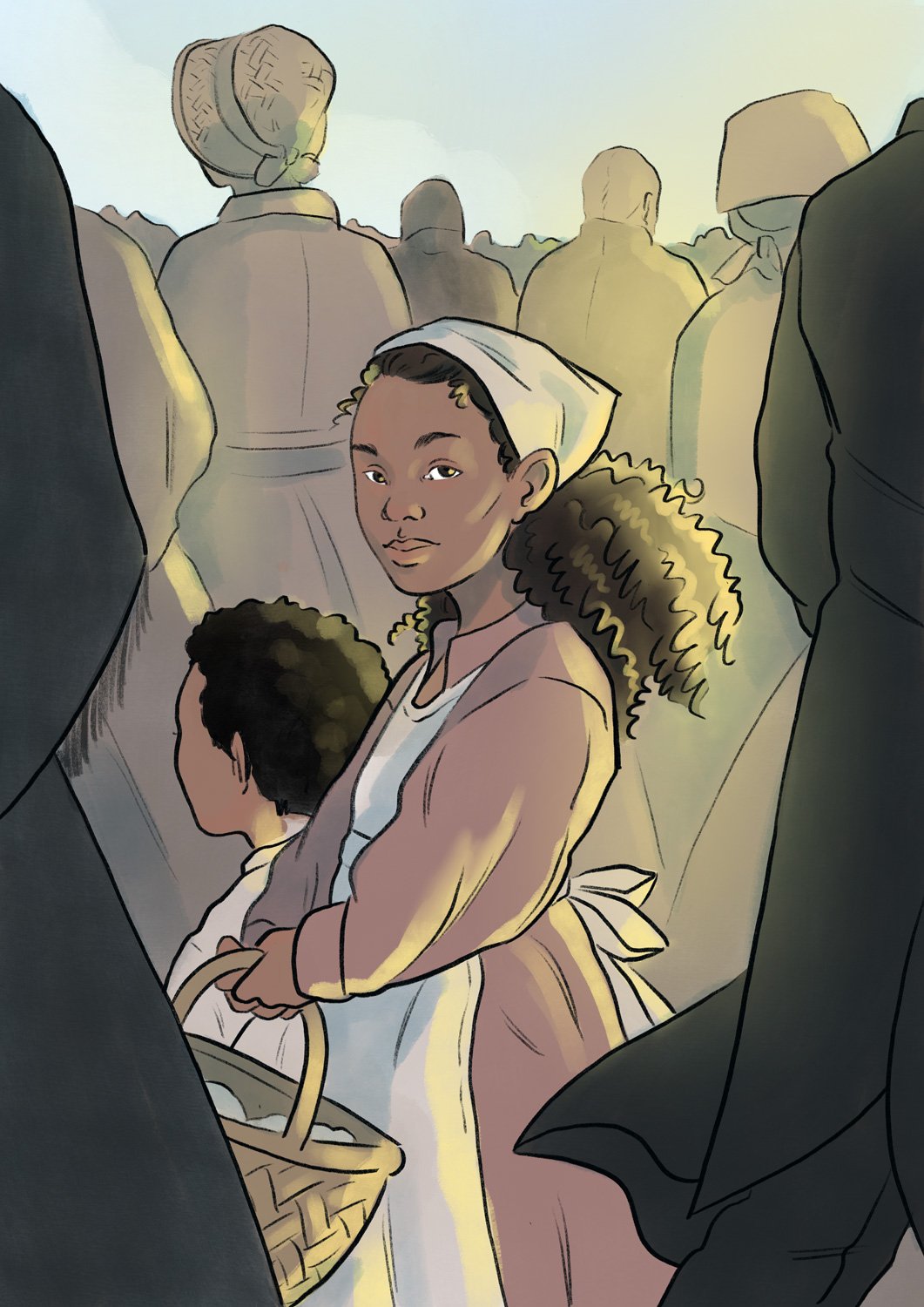
There is also an Ingar, born in 1715, the daughter of an unmarried maid named Bengta Nillsdotter from Rytterberg House in Röddinge, Skåne. As the father of her child, Bengta identified a black man whom she had met while providing a reserve of horses in Tranås. Apart from being born in Sweden, we know nothing about what life had in store for these girls. The girl born within wedlock would probably have had somewhat better prospects than the one born to an unmarried mother, but there were no guarantees. Perhaps the girls died as infants. At that time, the infant mortality rate was around twenty percent. Or maybe they grew up, worked as maids, got married, and had children of their own?
Genealogist Arvid Bergman has among his ancestors found Carl Gustav (Richard) Abrahamsson, a black man from Boston, who became a trumpeter for the Mounted Royal Life Regiment. In his book, 'Född slav - död fri?' (2018) (Born a slave – dead free?), Arvid Bergman tries to trace the descendants of Carl Gustav Abrahamsson. He also tells the story of Abrahamsson’s wife, Anna Maria Lustig, with whom he had two children. Their daughter, Anna Carolina, was born in 1793 and eventually married a man by the name of Johan Pettersson. Johan was born in Russia and professed the teachings of the Russian Orthodox Church. Anna and Johan had five daughters together. They lived and worked as agricultural laborers, moving from farm to farm in the region of Stockholm (Adelsö, Bromma, Täby, Skå). Abrahamsson’s son, Karl Fredrik, born in 1796, became a shoemaker. Karl Fredrik married a woman called Agneta Maria Stålberg, of traveling/Romani descent. They had four children and lived a nomadic life in Norway and Sweden. When the first wife of Carl Gustav (Richard) Abrahamsson passed away in 1820, he remarried Susanna Holm, with whom he had two more children.
Another black trumpeter, Karl Vilhelm (Robert) Spirman from Jamaica, had a daughter with a Christina Selling in 1793. The daughter, named Christina Wilhelmina, came to spend her first few years at the Public Orphanage. Karl Spirman seems to have disappeared from his daughter's life early on, but the mother was able to bring her daughter home from the orphanage in 1802. Christina Wilhelmina grew up in Stockholm, married a carpenter from Värmdö, and had at least two children who reached adulthood.
In the early 1770s, another black man, Charles Antoine Francois La Fleur Zamore, came to Sweden via France - though he probably originated from Algeria. Charles Zamore was a footman and timpanist for Duke Karl (XIII). He married twice and fathered sixteen children. Today he has several hundred descendants in Sweden and the United States, forming the large Zamore family.
Sources
Information about Ingar sourced from Sövde Church Records. Details of Juliana Sophia provided by the Public Orphanage (Barnhusförsamlingen) and the Royal Court (Hovförsamlingen) Parishes respectively, see Swedish National Archives' Digital Research Room
Read more about Carl Gustav (Richard) Abrahamsson and his family in 'Född slav – död fri?' (2018) (Born a slave – dead free?) by Arvid Bergman, which also covers the Spirman family. The expansive family of Zamore is described in 'Släkten Zamore' (1993) (The Zamore Family) by Gunnar Zamore.